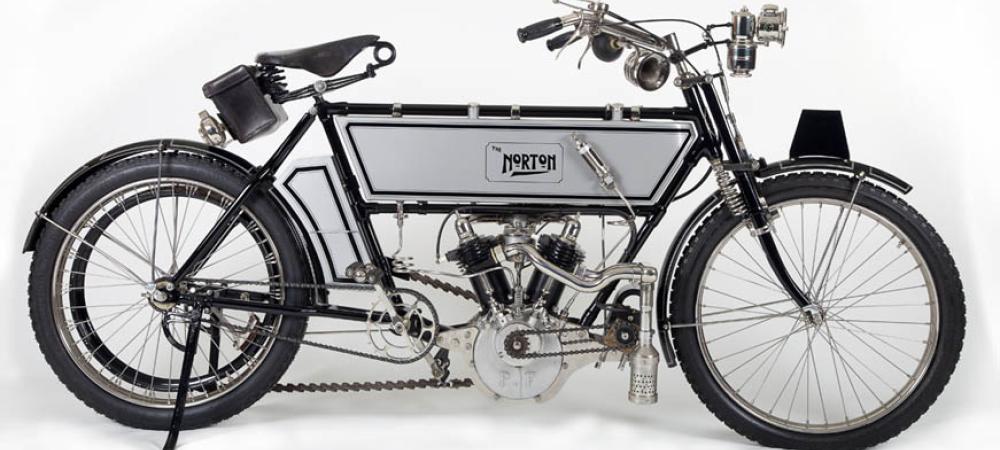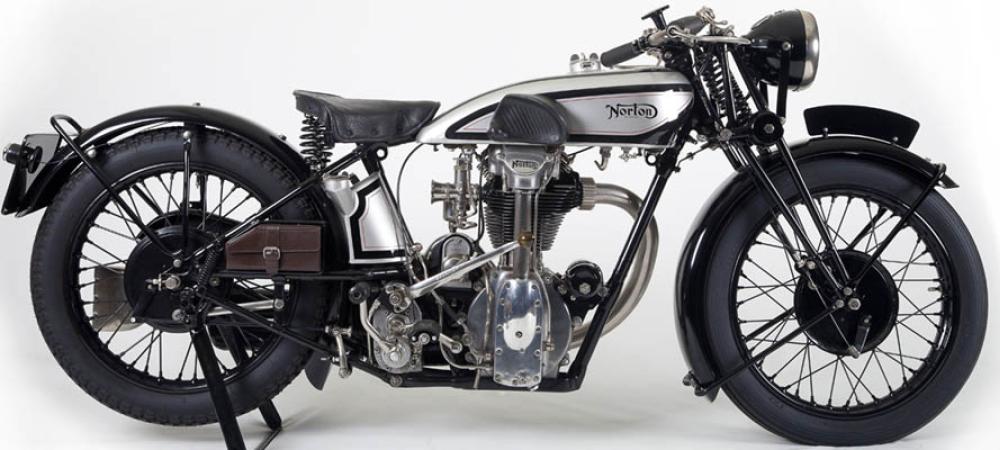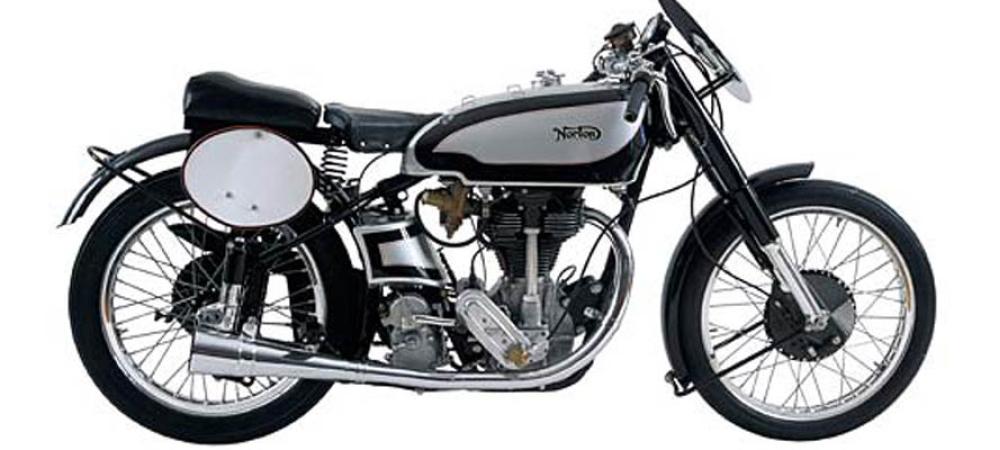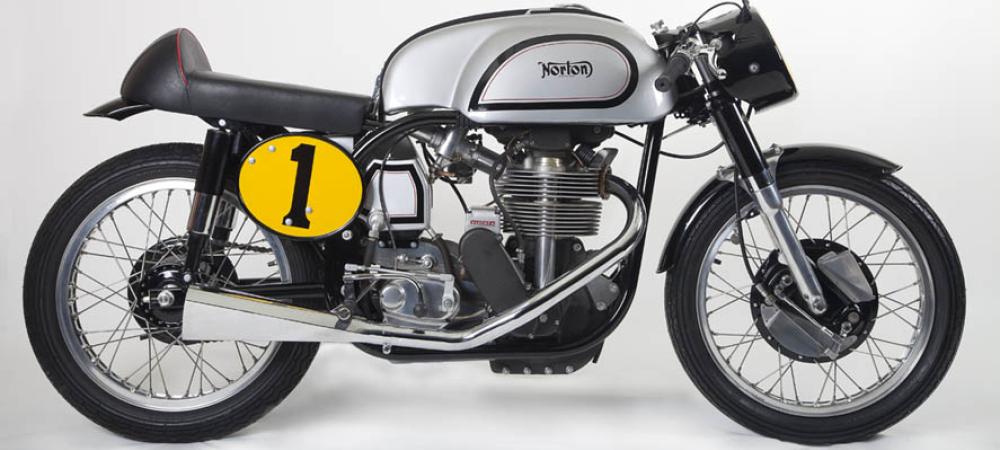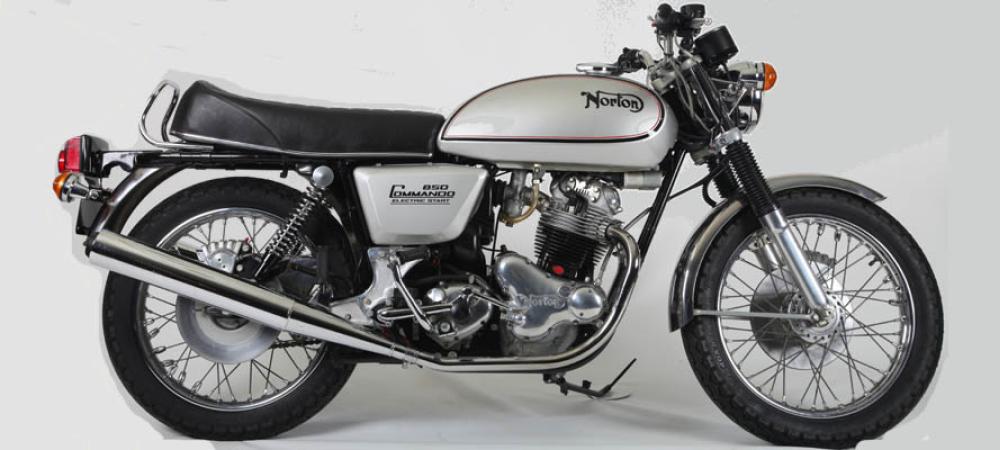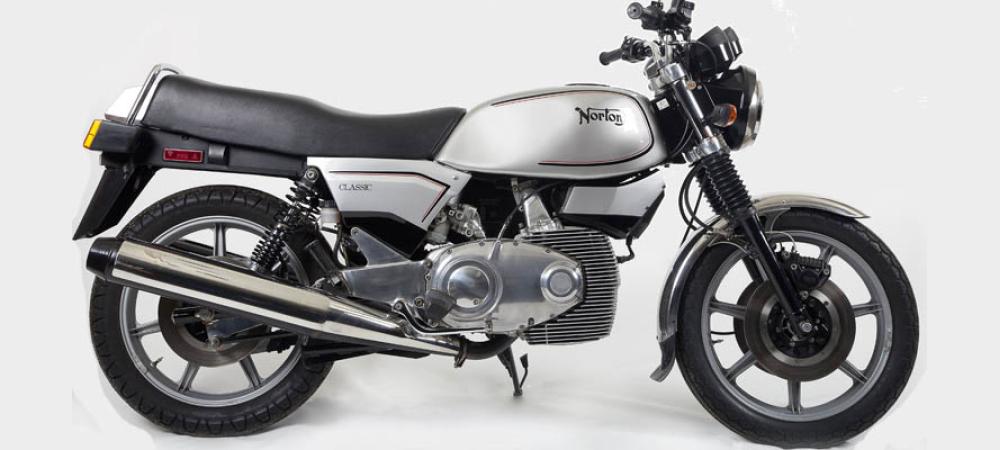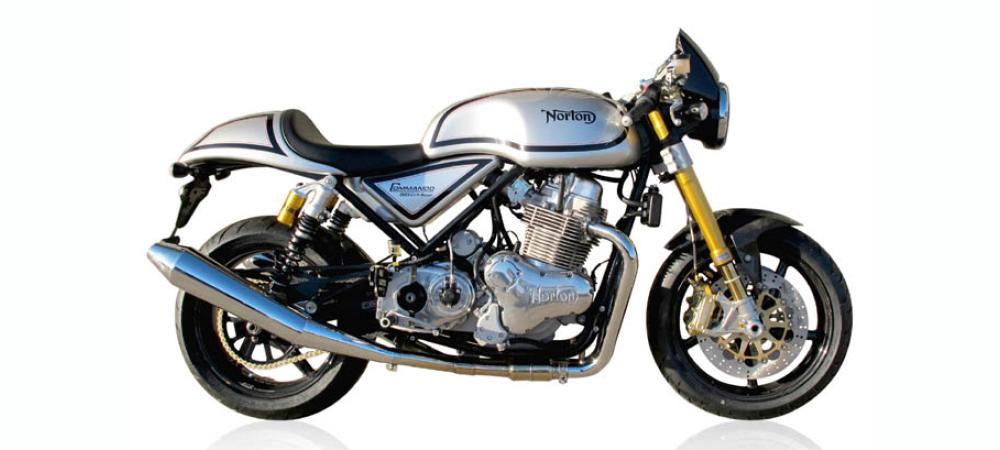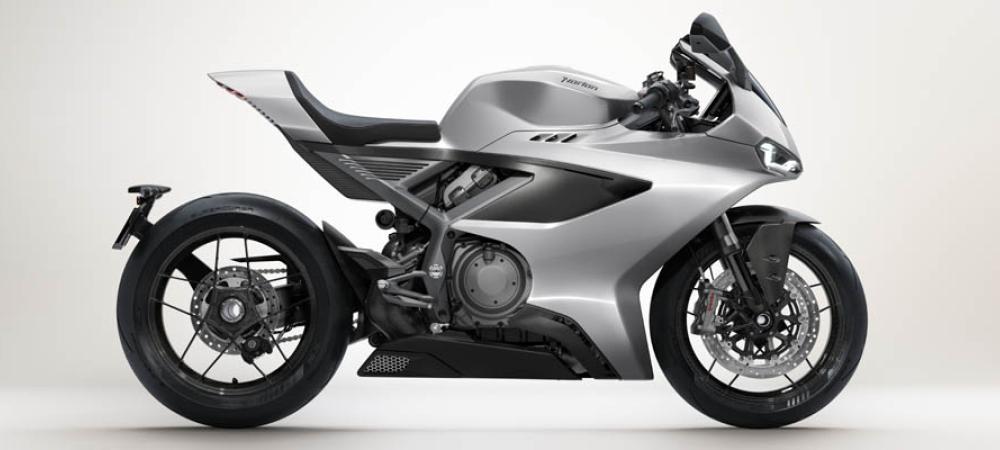COMMANDO
Although appearing at the 1967 Earls Court show, the Commando wasn't put on sale until April 1968 and had so many changes from the Featherbed twins that it certainly was the start of a new era, as the twin engine had been itself in the late 1940s. The Manganese Bronze takeover was in all ways a new start. The experimental P10 800cc twin with overhead camshaft had not shown much promise so the Atlas engine had to last for a few more years, like it or not. To remove the old bogey of vibration a whole new frame was devised with the engine and rear wheel as one unit separated from the rest of the machine and the rider by a rubber mounting system. The Commando as a machine went from 1967 to 1976 in at least 10 major guises, mostly cosmetic, i.e. tank, seat, exhaust, handlebars, also brakes and things to say nothing of any number of colour schemes. Apart from some passing mention for identification purposes all that will be ignored, and I will deal only with the engine and its evolution.
But just to keep you in the picture, here are some of the major changes and non-changes. The gearbox was the good old AMC device, the only significant change being a new longer mainshaft to carry the all new Laycock diaphragm clutch and triplex chain, all inside a relatively leakproof alloy casing, almost light years away from the stretch ridden single row chain and leaky pressed tin cases endured since the 1920s. The alternator was still on the end of the crankshaft with twin points behind the engine at first, with of course the 2MC capacitor as before. The crank had the same stroke as on the Atlas, but the metal content was changed as was the balance factor to 52% to take into account the fact that the engine now vibrated in isolation from the frame. The compression ratio was raised to 8.7:1 and then 8.9:1 and this along with porting improvements on the cylinder head gave a reliable 56 b.h.p. at 6500 r.p.m. Carburation was still by twin 30mm Amal Concentrics. The new machine was designed by Bernard Hooper and Bob Trigg working under the direction of Dr Stefan Bauer.
1968
This being the first year of production, the engine was virtually the same as on the Atlas, but leaned forward slightly in the frame. Other than that, it was more a matter of getting production under way so that the clamour for the new machine could be satisfied.
1969
This year saw the first variant, the 'S' Type. It had a small petrol tank and both exhaust pipes at a high level on the left side and was far too radical for Great Britain in those days as despite its good performance this machine didn't sell very well and was therefore dropped from the range during 1970. The extra performance of the 'S' Type may have come from the slightly lower back pressure exhaust system as the only internal change of significance was the moving of the points from behind the engine to the end of the camshaft. This of course meant a new timing cover to fit it in, with the rev counter drive moving inboard to come off a skew gear on the camshaft. I suspect this could also have been the same time as the 8.9:1 compression ratio was introduced along with the 6800 r.p.m. limit. Reverse cone silencers were also used for the first time, though the Fastback continued with the old Dominator cigar shaped silencers until the end of 1970, by which time it had become the Fastback Mk.ll with the reverse cones, but again this was just another cosmetic job and it sold the bikes readily enough.
1970
All the 1970 models had the newly positioned points and rev counter drive and the reverse cone silencers were taking over. A Production Racer model came out, quickly dubbed 'The Yellow Peril' on account of its colour scheme, It was supposed to have a compression ratio of 10.25:1 and other tuning modifications to give 70 b.h.p. at 6500 r.p.m.
This year also saw the introduction of the Roadster, a bit of a lookalike to the 'S' Type but with a more conventional exhaust layout, though it was upswept at a rakish angle. Across all the machines in the range appeared a new rear hub with a cush drive instead of the studs and sleeve nuts used since the 1940s. This cush drive had paddles that pushed pieces of hard plastic about, but as there wasn't very much room for it to compress it is a debatable point as to whether it did its claimed job. My own machine never had any cush drive, i.e. it had a solid drive Commando clutch and bolted rear wheel and chain life could be 1000 miles without adjustment and 10,000 miles per chain.
The Production Racer was available with a disc brake which was to eventually oust the twin leading shoe on all models, the latter having been introduced with the Commando in 1967 and was a direct fitment into the 8" brake drum already in use on the Dominators. The twin leading shoe version was never as good a brake as it should have been as its construction was sloppy, whereas the single leader was always very adequate, being used from the humble 350cc Navigator up to the mighty 750 Atlas.
1971
There were model and cosmetic changes, although nothing significant happened to the engine until 1972, but then with changes to increase the power, we reaped the failures that all this power now started to show up in the form of lack of forethought, inadequate long term testing and sloppy production and quality control techniques.
1972
The Combat engine now appeared on the scene from engine No. 200976, standing out with its black barrels and 65 b.h.p. at 6500 r.p.m. This was probably the official highest point as far as power output was concerned. There was more capacity to come but not any more reliable power in the production form. That original 500cc engine with 29 b.h.p. had come a long way indeed. This increase in power came mainly from a compression ratio now upped to 10:1 by machining 40 thou. (ca. 1mm) off the cylinder head, but they forgot to shorten the pushrods to compensate, so for some time following, the rocker arm angle was out and often the rockers touched the head. Another problem in this area was coil bound valve springs, eased by leaving out the heat insulation washers under the inlet valve spring cups.
The Achilles heel of the engine now came to the fore, the main bearings could take no more and failures within a few thousand miles became commonplace. The crankcases were strengthened and the timing side ball race was replaced by another roller, but these seem to only have been guesses as this showed up even more the flexing of the crankshaft such that the rollers of the main bearings dug in and again the whole shooting match started to disintegrate.
The next step was to investigate what was really going on. One of the prime causes of this disaster was that the advance and retard mechanism hanging on the end of the camshaft was just not up to the job, especially considering all the start and stop jerks imposed by the chain drive, being driven one way with the valve springs pushing it back. The A/R unit used to shake apart and stick anywhere, including full advance. The engine shook, the crankshaft didn't know if it was coming or going, and further, due to lack of vibration coming through to the rider he didn't get much feedback. Then to add insult to injury the tops started to come off the pistons, there being too large an oil groove below the bottom oil control ring.
To sort all of this out, Superblend main bearings were fitted, these having a barrel shape to the roller to allow the crank to flex without the any roller corner digging in. There was a stronger A/R unit from Lucas and new pistons from Hepolite. An after market modification was now appearing on the scene; Boyer-Bransden and also Lucas in the guise of Mistral Engineering began to manufacture electronic ignition kits. These did away with the mechanical advance and retard set up, using a magnetic pickup that achieved a better and longer advance curve due to electrical/magnetic principles. Ignition timing was now identical on both cylinders and stayed there too if you fitted one of these kits. Things were looking up at last.
Back at the factory, there was another little modification that characterised the Combat engine; the engine breather moved away from the left end of the camshaft to being non timed and taken straight from the sump via a foam filter. A welcome addition was a car type cartridge oil filter, situated between the engine plates behind the gearbox. There was also a new high lift camshaft, known as the SS. Norton distinguished later even faster ones though by calling them SSS and SSSS, Triple S and Four S, or 3S and 4S, but these were never fitted to a production road engine, except perhaps the Production Racers. The Combat was the first model to be fitted with 32mm carburettors, although from then on they were to be found on all engines from the factory, The inlet tract remained at 30mm, supposedly improving torque. All this power then showed up the braking limitations so before 1972 was out, disc brakes appeared and were eventually fitted to all models.
Regarding models, this was a period of plenty, the Fastback with several exhaust systems still had a year to run, the Roadster having taken over from the 'S' Type was to last through to 1977 as an 850 while the clamour from the European market to get away from the high rise bars and peanut sized tanks gave us the Interstate, also with a new lower exhaust system. Low gear ratios fitted mainly for the American market were raised; these had allowed too much over revving, which didn't do much for the already overstrained Combat unit. As all these Combat modifications were well under way there was short term retuning, with the earlier cam and a lower 8.9:1 compression ratio. By 1973, Superblends and 32mm carburettors were standard, but the compression ratio was kept down to 8.9:1. The latter was achieved by a short term expedient of using a thicker head gasket, unfortunately the material chosen was aluminium instead of copper, it is said because the stamping machine couldn't cope with thick copper. True or not, aluminium is possibly the worst material ever used for this purpose, it just oozes out the more the bolts are tightened and oil seepage is ever present. Back to the drawing board, copper or flame ringed halite gaskets ended up being the only satisfactory ones.
1973
The Commando was now settling down after all the warranty claims from the ill fated Combat (discontinued from engine No. 211110); oil leaks and vibration were still not cured but at least the engine didn't instantly self destruct as in 1972. Stocks of the cam followers with falling off stellite tips were running out, but the range of soft camshafts did run on for some time, this was usually noticed after about 6,000 miles when top end performance dropped off. According to the man who hardness tested one of mine, he had seen harder chewing gum. It appears that the EN32 material used had some of its hardness removed by the particular Tuftriding process utilised. It took the buying public a long time to forget these episodes and this and the main bearing saga were a millstone round Norton's neck for years.
Now came to the largest production version of this engine, the 850cc, though its true measurement is 828cc. This time it was bored out to 77mm; it was a wonder that the fins didn't drop off the barrel. The barrels took on a different appearance as the bottom flange and holding studs with nuts were replaced by through socket cap bolts that required the head to be removed first to get to them, so there was no more removing the head and barrel as one unit as could be done previously. Compression was lowered to 8.5:1 to help reliability and power output was quoted as 60 b.h.p., although the truth was probably not more than 55. The change of piston size meant a slight alteration to the crank weight to retain balance. The large nut type sump filter returned, having been dropped for the Combat. There was also a balance pipe between the two exhaust pipes; this helped the low end torque. To show the performance available (though not from the as bought machine), an 850 was prepared and carefully run in, fitted with a small fairing and a 24 tooth gearbox sprocket. It reached 142 m.p.h. at Elvington, while later fitted with a 19 tooth sprocket it did 114 m.p.h. and 12 seconds for the standing quarter.
Model changes for 1973 were few; the Interstate and Roadster continued with Candy Apple Red being a very popular colour option. The blackcap silencers appeared and a new style airbox, neither of which did much for the performance and the latter was often thrown away by the owners and the earlier 750 one used instead. With the new 850 selling well the 750cc engine was pensioned off as far as road machines were concerned, No. 230935 being the last one. Finally, before 1973 was over, a couple of small modifications passed into production; stronger Superblend main bearings and stellite tips for the valves.
1974
The go faster styled JPN arrived on the scene with the works team livery on the white racing fairing along with a standard 850cc engine. The fairing was equipped with twin headlights, which needed more electricity necessitating the fitting of a high output Lucas RM23 alternator to keep the battery up. The JPN was always a sheep in wolves clothing, but a 750cc version had a brief resurrection in the form of a short stroke competition engine. This used the 77mm bore of the 850 but with an 80.4mm stroke crank. This was sold as the short stroke JPN for people who really wanted to go racing. The works racing team enjoyed some success in 1973, Peter Williams and Mick Grant finishing first and second in the Formula 750TT, along with a lap of 107m.p.h. It was probably this that encouraged the production of replicas. In the main however, 1974 was a year of consolidation: building standards were improving but the model range was down to only the 850 Roadster, Interstate and the soon to be discontinued JPN Replica. A new decal appeared on the instruments, the wiggly blue NVT which was nothing more than a portent of the fading financial fortunes of what remained of the British motorcycle industry.
1975
This year saw as major a change in the Commando as any yet; a left foot gearchange. As if that wasn't enough an electric starter was also added, though thankfully (and in most cases essentially), the kickstarter was retained. These changes were brought about by American market demands as usual and Japanese influence was being felt as well. The minor changes were many to the Mk.lll, vernier adjustment to the Isolastics had been devised since the very beginning of the Commando, but production had been thought too costly, it was now adopted at last. A disc rear brake and the high output RM23 alternator became standard fitments and the exhaust pipe fitting to the head became a spherical seat affair. The oil feed to the engine now had a non return valve in the timing cover; no more drained oil tanks. The timing chain got a rubber faced tensioner and an inspection hole in the cover. The primary drive cases got screws all the way round to stop leaks caused by only having one central nut. The primary chain itself was fitted with an hydraulic tensioner, thereby allowing the gearbox to be fixed in one set position. This was of course necessary because of the crossover linkage to the left side gearchange. The engine breather was again shifted to avoid fouling the back of the starter motor. All this was very welcome news to the purchasers of the machine, but it was too late to save Norton as it was, sales continued through 1976 and dribbled into 1977 and finally spluttered to a stop in 1978 in the hands of the Receiver.
So there it is; 1947 to 1977, from 497cc to 828cc, and 29 b.h.p. to 65 b.h.p. over a 30 year period. Some parts such as the rocker covers and rocker adjusters along with the spindle end plates never changed. The latter were still a poor design needing a one piece casting. Although everything else altered on the engine it still looked what it was, the direct descendant of the original design. And some last points of note. An interesting one off was made in 1976 by the Wolverhampton workforce when under the liquidator. Known as the Norton '76 it was mainly a neat and tidy styling exercise, but it did have an SU carburettor which is reckoned to be a good modification for any Commando, there being kits on the market or information for do-it-yourself efforts. One C. R. Axtell backed by Ron Wood in the USA reportedly extracted 81 b.h.p. from a 750cc engine for dirt track racing and a double 850cc engine dragster attempted the two wheel land speed record, but 271 m.p.h. wasn't quite good enough. In recent years eight valve heads and 920cc versions have been developed by adventurous souls.
© Norton Owners Club 1991
Originally published in the Norton Owners Club Classic Calendar for 1991

